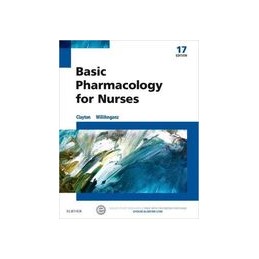- Obniżka


 Dostawa
Dostawa
Wybierz Paczkomat Inpost, Orlen Paczkę, DHL, DPD, Pocztę, email (dla ebooków). Kliknij po więcej
 Płatność
Płatność
Zapłać szybkim przelewem, kartą płatniczą lub za pobraniem. Kliknij po więcej szczegółów
 Zwroty
Zwroty
Jeżeli jesteś konsumentem możesz zwrócić towar w ciągu 14 dni*. Kliknij po więcej szczegółów
Known for its accurate, up-to-date drug content and its practical application of the nursing process to drugs and disorders, Clayton and Willihnganzs Basic Pharmacology for Nurses, 17th Edition prepares you for safe medication administration. Emphasizing the nurses role, clear guidelines cover safe drug handling, types of drugs used for disorders or to affect body systems, injection and enteral administration, and patient education. From a respected PharmD/Nursing author team, this full-color text also provides an excellent review for the pharmacology questions on the NCLEX® examination.
Opis
